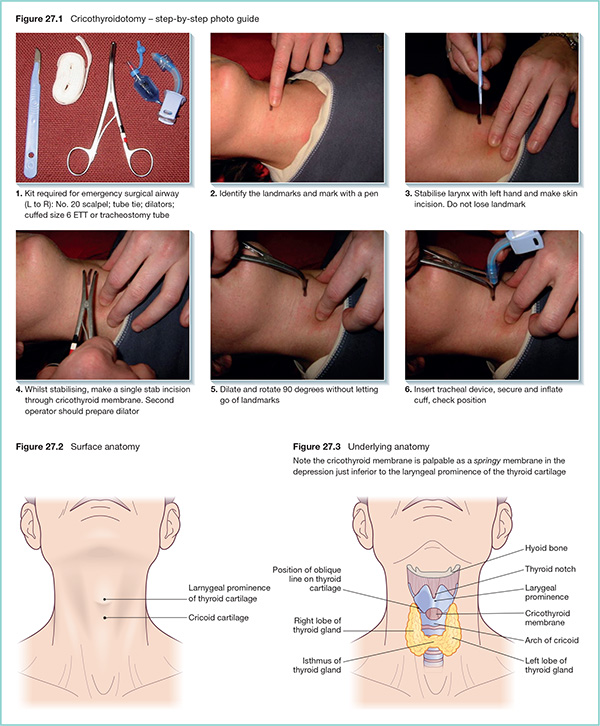27 Timely and competent airway management is the top priority in any critically ill patient. Endotracheal intubation provides a definitive airway and is considered the gold standard for airway management. However, the austere environment of the pre-hospital setting and confounding factors such as complex facial trauma, severe oropharyngeal haemorrhage, and vomiting may reduce the likelihood of successful endotracheal intubation. Data have shown that up to 12.9% of all pre-hospital intubation attempts fail. Given the time-critical nature of airway management, the pre-hospital care practitioner must have a well-rehearsed standard operating procedure to ensure effective and expeditious ventilation and oxygenation. Cricothyroidotomy is a rescue procedure, which is indicated in the ‘can’t intubate, can’t ventilate’ (CICV) situation where all alternative strategies of achieving a definitive airway have failed. The commonest indications include: A common aphorism is that, given the incompatibility of loss of airway patency with life, there is no absolute contraindication to cricothyroidotomy. However, both lack of necessity (airway secured with less invasive means) and futility (for example, in tracheal transection with distal mediastinal retraction, or in the case of complicated laryngeal/cricoid cartilage fracture), are clear contraindications. Relative contraindications include:
The emergency surgical airway

The failed airway drill
Indications
Contraindications

Full access? Get Clinical Tree








